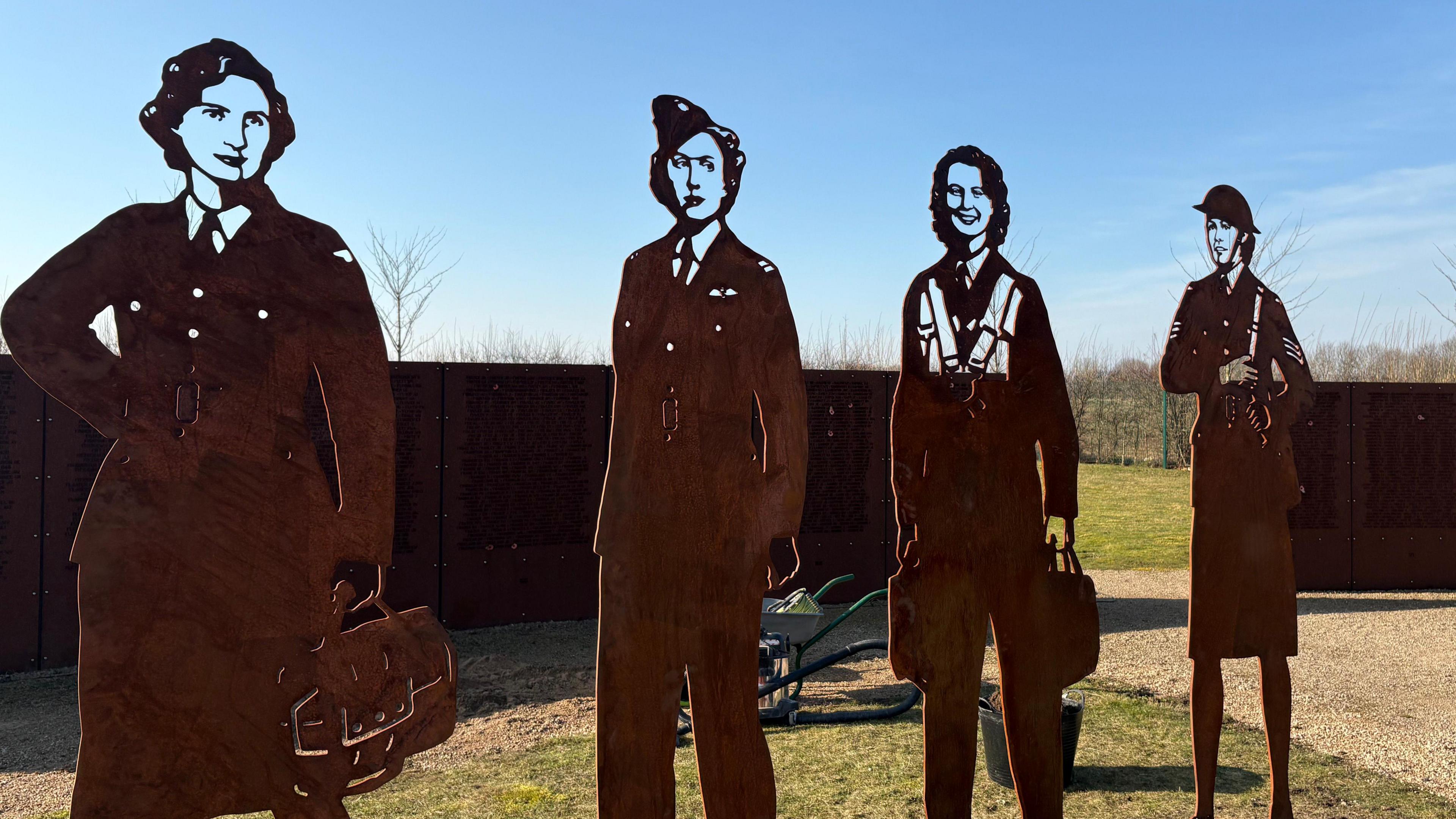'Mum was one of first to know where the enemy was'
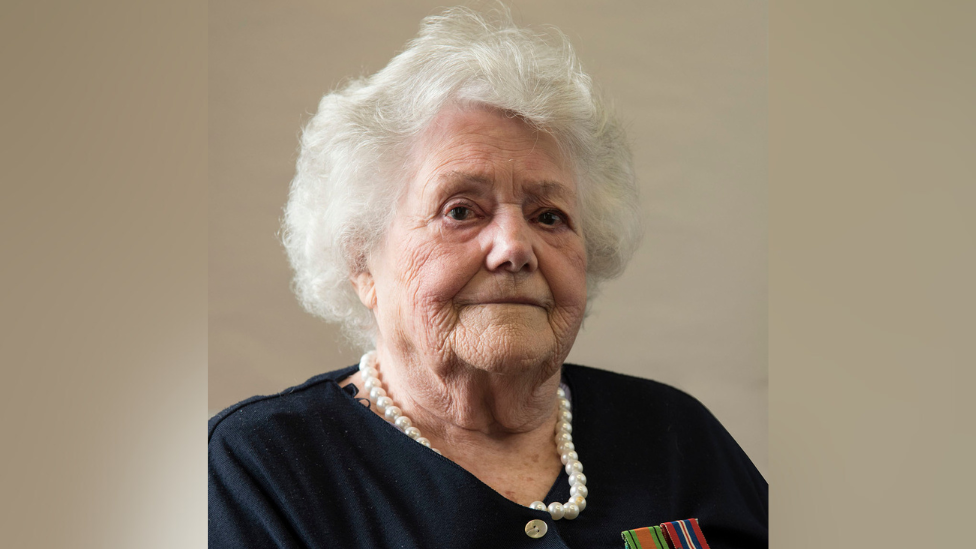
Margaret Hourigan played a vital role in World War Two, working all day and night to track the enemy's movements
- Published
"They bombed everyone. They would pick a town and bomb it like hell. We would plot them coming," Margaret Hourigan once recalled.
She was one of thousands of women who took on crucial roles during World War Two and became a plotter, responsible for tracking the size and movements of enemy planes to inform pilots.
Born in 1922, Margaret, a miner's daughter from Kirkby-in-Ashfield in Nottinghamshire, was a teenager when she answered the call to service and was 101 when she died last year in Adelaide, Australia, where she settled after the war.
On Friday, she returned to England "in spirit" as a steel sculpture of her silhouette was unveiled in her honour alongside other women of war.
Her daughter Elizabeth Hourigan-Calanca - the youngest of eight children - and eldest sibling David Hourigan travelled from Australia for the event at the International Bomber Command Centre (IBCC) in Lincoln.
Elizabeth, 63, said the role of her mum, who joined the Women's Auxiliary Air Force in 1940, and other women in the war "to this day hadn't been highlighted enough".
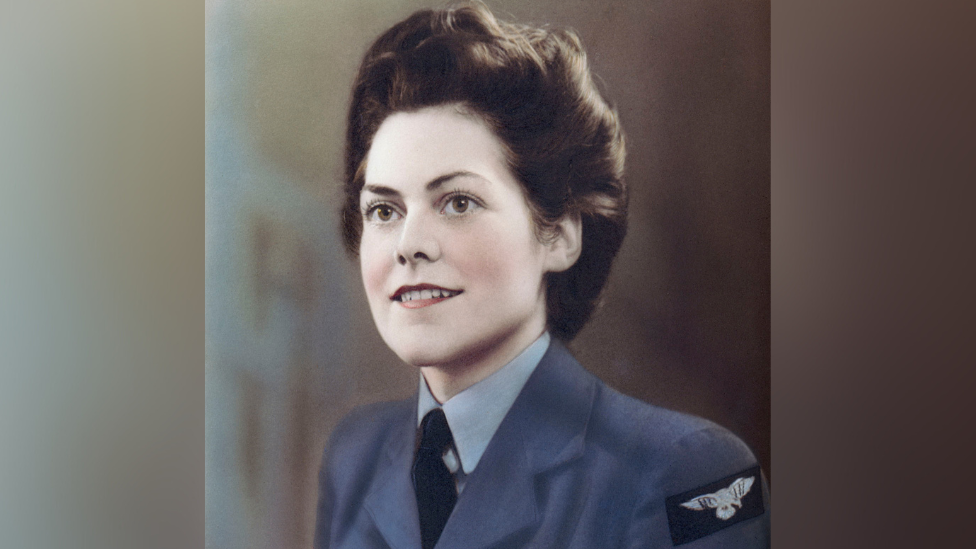
Margaret joined the Women's Auxiliary Air Force (WAAF) before rising to the rank of Sergeant as a plotter with Fighter and Bomber Commands
"[Mum] saw the enemy by the markers on the plotting. When the information was rung in, she would take the calls and the plotting would go out.
"She was one of the first in England to know where the enemy was laying and what they were doing.
"I don't even think at her age [at the time], you would even understand the enormity of what you're doing," Elizabeth said.
Elizabeth missed out on some of the war stories her mother shared with her older siblings, learning the significance of her mum's position as she got older.
The secretive nature of her mum's work also meant there was a lot she could not say.
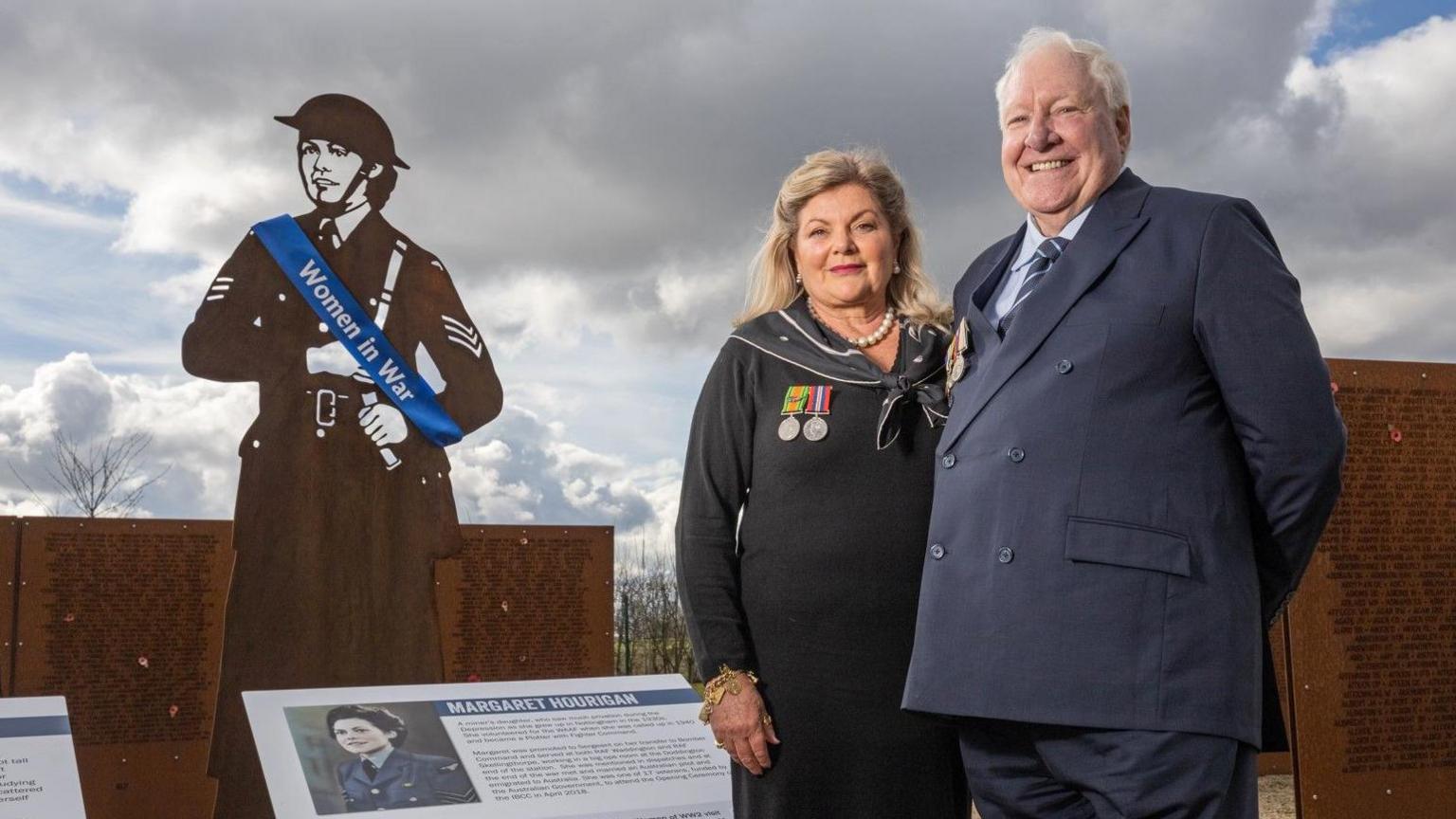
Siblings Elizabeth and David booked their tickets for the special event to honour their mother and other women of war as soon as they found out about it, Elizabeth said
Margaret tried not to remember the "sadness of the war", her daughter said.
"People that she met and knew, and pilots that she saw and spoke with, and shared a cup of tea or piece of toast with, they didn't come back.
"When she had more experience and was more senior, she knew by looking in the eyes of pilots - she could almost tell which ones weren't coming back.
"It was the fear in their eyes or the location they were going. That stayed with her a lot," Elizabeth said.
Mum's memories
Margaret married Australian pilot Lloyd David Hourigan and emigrated to Australia after the war.
She later decided to record key moments of her time in service, including the beginning of the Battle of Britain and a base visit from King George VI and Sir Winston Churchill.
In one audio recording she said: "The worst were the night bombings. And then when we were at work, we were very busy.
"We used to work four hours on and off over 24 hours. You lived on base in mission huts."
Margaret's interview for a senior watchkeeper position in "bomber command" was one of the few light moments during her service.
"For my interview I had to go to Scampton and I was polished up to the nines, and I went into this room and four people were sitting there and I slipped over in front of them and then started laughing.
"They wanted to laugh but tried to hold it in. I then got the job," she said in another recording.
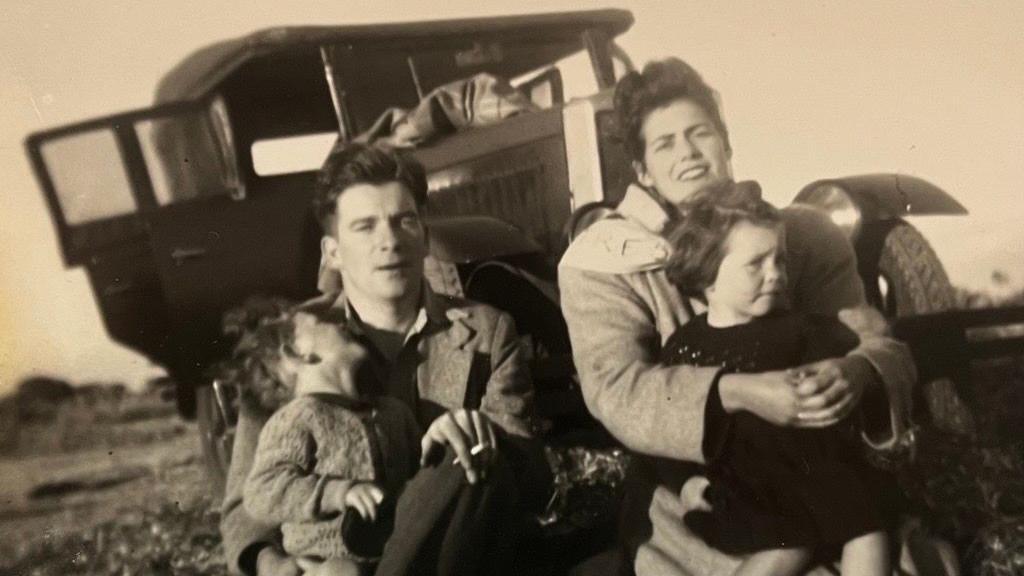
Margaret and Lloyd had eight children, with the war "shaping" their upbringing
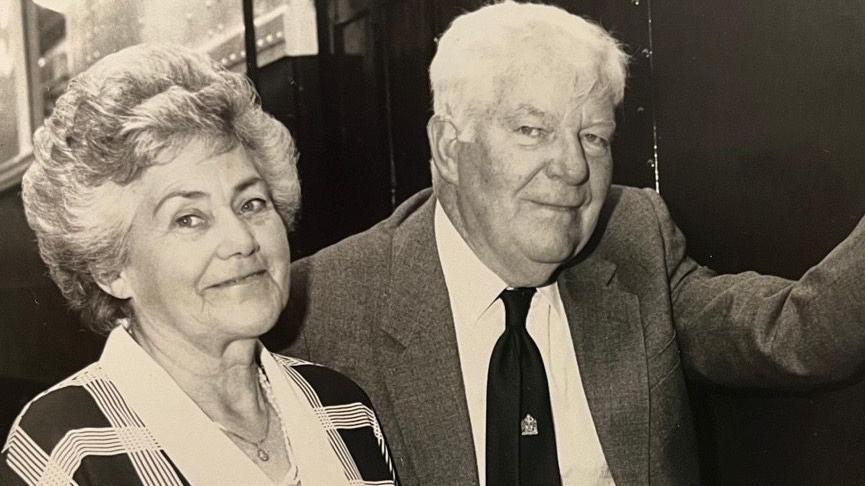
Margaret and Lloyd married at the end of the war in October 1945
Margaret and Lloyd had eight children, including three sets of twins.
While Lloyd studied away from home, she brought up all eight children for several years without help, Elizabeth said.
In the eyes of her children it was clear the war had "shaped" Margaret to be "accomplished and capable".
She spent her spare time helping the less fortunate, her daughter said.
"All that and a wicked sense of humour that made light of a situation when you needed it," she added.
Elizabeth never saw her mother angry and believed her character had been passed down to the family, including her own four daughters.
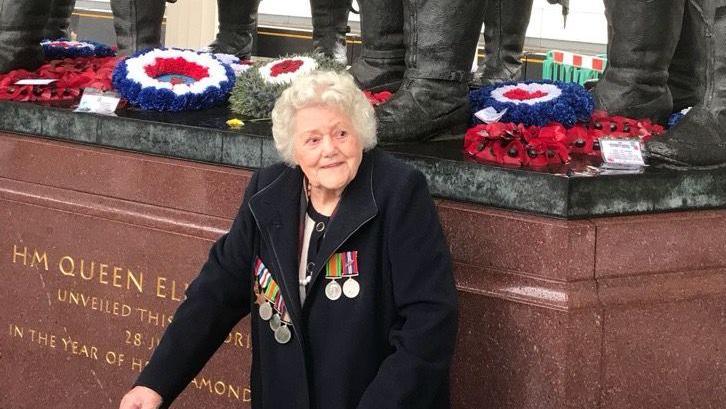
Margaret was in her 90s when she was invited, among other veterans, to the opening of the IBCC in 2018 and made the journey from Australia to attend
Later in her life, Margaret had to bury three of her children who died in their 50s from serious illnesses - a pain that "took her back to the war".
When Margaret died in January 2024 she was a grandmother of 18, great-grandmother of 10, and great-great-grandmother of two.
Her "likeness and personality" was captured in her steel silhouette revealed alongside 10 others on Friday, as part of the launch of the IBCC's Women in War book festival.
An all-female RAF flypast also took place to mark the occasion.
Elizabeth said: "I'm very happy that she's returned to England in spirit and has a statue there to remain in her honour because she always felt to be English, she always talked about coming home."
Get in touch
Tell us which stories we should cover in Nottingham
Follow BBC Nottingham on Facebook, external, on X, external, or on Instagram, external. Send your story ideas to eastmidsnews@bbc.co.uk, external or via WhatsApp, external on 0808 100 2210.
Related topics
- Published8 March
